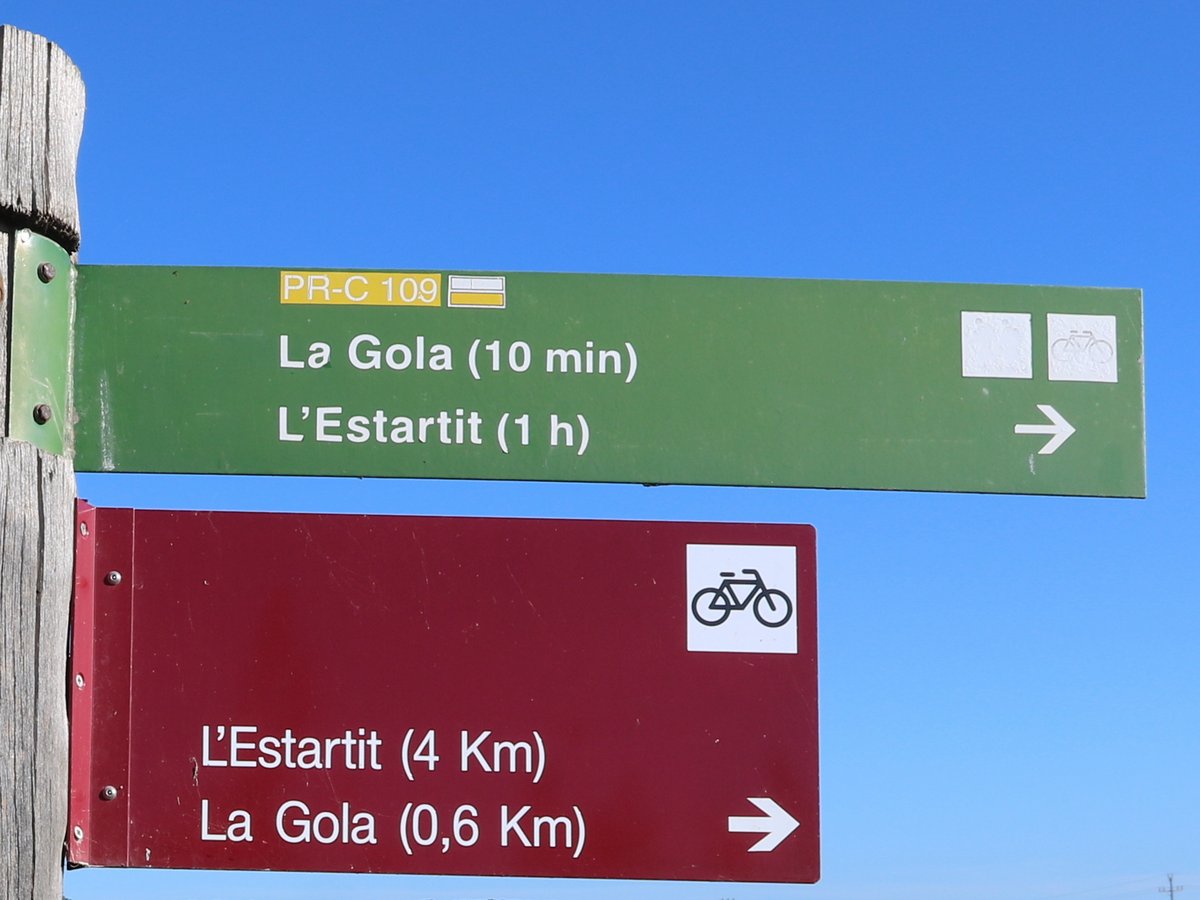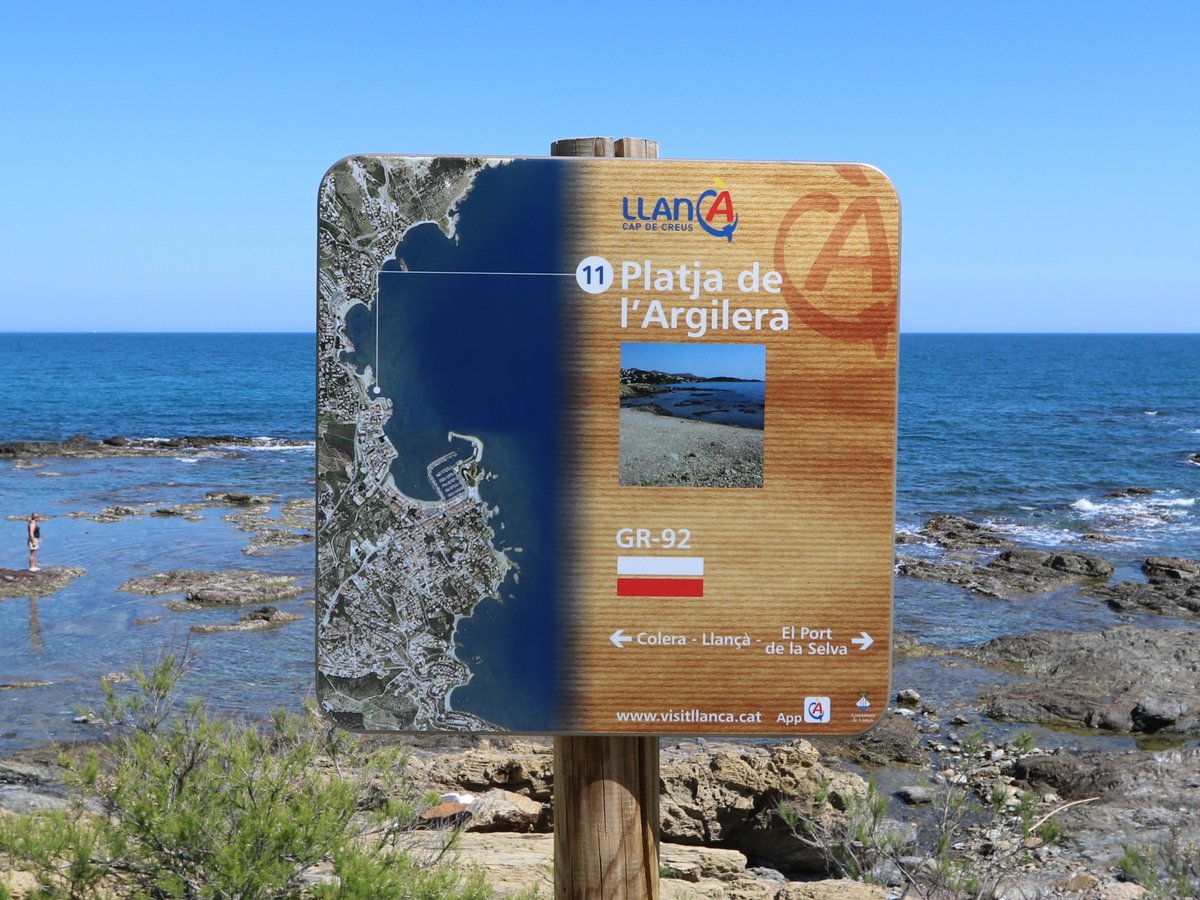The abundance of excellently maintained hiking trails and routes in Spain is a bit of a chicken-and-egg problem. It’s unclear whether Spaniards cheerfully go hiking because the existing trail network is great or whether the infrastructure is maintained so well because numerous hikers would prefer not to go missing on said trails.
Either way, currently, anyone with even a mild interest in hiking, regardless of their fitness level, has an abundance of choice when it comes to properly prepared hiking trails in the Costa Brava. The organization overseeing the nation’s hiking networks is FEDME, the national federation of mountaineering and rock climbing; however, the routes and trails discussed below do not require specialized equipment or a passion for bouldering—a pair of good hiking boots or shoes would be enough.
All Costa Brava hiking trails can be separated into three major groups:
GR
The abbreviation GR stands for Gran Recorrido, long-distance routes that are rarely hiked in their entirety; rather, hikers choose a specific section for their trips. A single stage of GR is doable in one day, but not the whole route.
An example of a GR trail: GR92 with a distance of 562 km, running along the Mediterranean coast of Catalonia, or GR65, the Way of St. James (Camino de Santiago). Alternative names are sometimes employed, such as GR92.1 or GR65.3.3, signifying diversions and alternative routes on any given stage of a GR.
Signs accompanying hikers along a GR trail are red and white, commonly appearing on rocks, trees and, rarely, on standalone signposts erected at points where different trails intersect. The “correct” direction is marked by a two-coloured rectangle; the “incorrect” one is a two-coloured cross; a turn or a direction change is a two-coloured triangle.
Some trails now marked with red and white have been hiked for centuries. Besides the above-mentioned Way of St. James, there is the trail Camí de Ronda, a 160-km-long route connecting the seaside towns of Blanes and Portbou, originally constructed for coast patrols and contraband prevention. Today, Camí de Ronda forms the first 12 stages of the GR92.
The GR system is also in place in France (Grande Randonnée), Portugal (Grande Rota), Germany (Fernwanderwege), the Netherlands (Grote Routepaden), and several other European countries.
PR
This abbreviation stands for Pequeño Recorrido, literally meaning a “small” (short) “distance” (route). There are no PR trails that exceed 50 km in length, so with some perseverance, many of them can be covered in one day.
A route name example: PR-C106, with the letter after the dash signifying the autonomous region through which the route runs, in this case, Catalonia. Upon entering a different region the route name changes accordingly.
The road signs for PR trails follow the same logic as the signs for GR routes, varying only in colour—PR trails use white and yellow instead of white and red.
SL
SL stands for Sendero Local, or a “local trail”. The distances do not exceed 10 km. The naming convention is identical to PR, for example, SL-C18. Conversely, the road signs follow the logic of the other two networks but use white and green colours instead.
Circular routes
The routes whose start and finish points coincide are very convenient from the logistical point of view since you do not have to worry about coming back to point A after a gruelling, several-hours-long hike that led you to point B. If no public transit is available at the finish line, you will have to come back on foot and enjoy the same scenery for the second time, which may not be ideal for many hikers.
There are no circular GR routes, but other types have some options. Here are some circular itineraries centring around popular beach towns of Costa Brava:
- Sant Feliu de Guíxols: SL-C33 (5,17 km)
- Palamós: PR-C105 (21,19 km)
- Mont-ras: SL-C24 (6,12 km)
- Palafrugell: PR-C106 (8,93 km)
- Begur: SL-C23 (9,73 km)
- Pals: PR-C108 (20,51 km)
- Torroella de Montgrí: PR-C109 (15,14 km), SL-C18 (2,84 km)
- L’Estartit: SL-C20 (8,97 km)
Itineraries in municipalities
Every Spanish municipality preoccupied with tourism development in its region reserves funds to maintain a tourism office where anyone interested may receive a wealth of free information about the region, take a map and many activity brochures.
Very often, said brochures include hiking itineraries and routes. The most conscientious municipal governments make sure to include this information online as well, where detailed route descriptions and even GPS tracks for hand-held navigators are available.
Municipal hiking itineraries most often consist of select segments of the official routes with the GR, PR or SL designation. Even if a navigation track file is nowhere to be found online, it can always be located for the longer route that includes the itinerary you’re interested in. At times, you will need to find your own way from one part of the itinerary to the other, but those are usually connected by paved roads, so there is minimal danger of getting lost.
Itinerànnia
Municipal governments do not often assume the risk of creating a hiking itinerary from scratch, preferring to use the ones already available. However, some dazzling exceptions have been made, of which the Catalan hiking network Itinerànnia is a great example.
Itinerànnia is a collaborative effort of three regional administrations within the province of Girona—Ripollès, Garrotxa and Alt Empordà. The combined distance of all roads and trails of the network is over 2500 km. Itinerànnia is planned in such a way as to include at least one safe and accessible hiking route between any two towns or cultural sights within the three districts.
The Itinerànnia map includes not only cities, towns and trails themselves, but also museums, historical and cultural monuments, hotels, camping grounds, restaurants, gas stations, bicycle rentals and other tourist services.
An Itinerànnia hiker may encounter one of the following signs on the way:
- A direction-indicating yellow triangle on a tree, rock or any other surface.
- A yellow arrow with a red tail, affixed to a post, with the names of nearby towns or cities and the distances to each. Arrows with silver tails have the same function. A signpost with an arrow also includes a small yellow board with the hiking route’s parameters like the name of the region, the latitude and longitude, and the elevation above sea level.
- An information board installed in a town along the way with an itinerary map on one side and a detailed map of the surrounding area (radius of ~9 km) on the other.
- A yellow arrow with a green tail affixed to a post, signalling a circular route around a town or city.
Endurance Walks
The Federation of Hiking Tourism of Catalonia (the FEEC) publishes an annual calendar for the so-called Endurance Walks of Catalonia, Circuit Català de Caminades de Resistència, that includes over twenty challenging hikes every year. These are official events that require registration and participation fees. Upon completion of each hike, the FEEC publishes the list of participants who have successfully finished the hike within the timeframe stipulated in the rules. At the end of each hiking season, the federation commemorates those who complete 75% or more of all hikes.
Each Endurance Walk satisfies the following criteria:
- The route runs through mountainous terrain.
- The length of paved sections of the route does not exceed 5% of the total distance.
- The total distance is between 45 and 90 km.
- The required time of completion is between 12 and 24 hours.
- The total elevation change does not exceed 6000 m.
- The distance between food and drink stations does not exceed 15 km.
- The route has at least three time-keeping stations along the way.
The navigation signs put up for each hike may be temporary and aren’t guaranteed to stay for more than the duration of the event. However, some signs and barriers have become permanent over time, like, for instance, Marxa 24 Hores del Cap de Creus, signs for a 24-hour hike from Llançà to Cap de Creus that takes place in April. Even then, attempt an unofficial endurance hike at your own risk!
Grans Camins de l’Aigua
The hiking network Grans Camins de l’Aigua, created in the district of La Selva in Girona, includes only ten routes, five of which are “borrowed” from other networks, and the other five are mostly adapted for cyclists. It is worth including here for the signage employed by the network.
The routes that properly belong to Grans Camins de l’Aigua, namely, Camí de Terra Negra, Camí dels Avellaners, Camí de la Tordera, Camí dels Segadors, and Camí de l’Onyar all use a white and blue rectangle for signage. Do not confuse it with the white and green rectangle of the SL network!
El Camí
Useful links
www.fedme.es—the website of the Spanish federation of mountaineering and rock climbing (in Spanish and Catalan)
senders.feec.cat—the website of the FEEC that includes route descriptions and GPS tracks







































